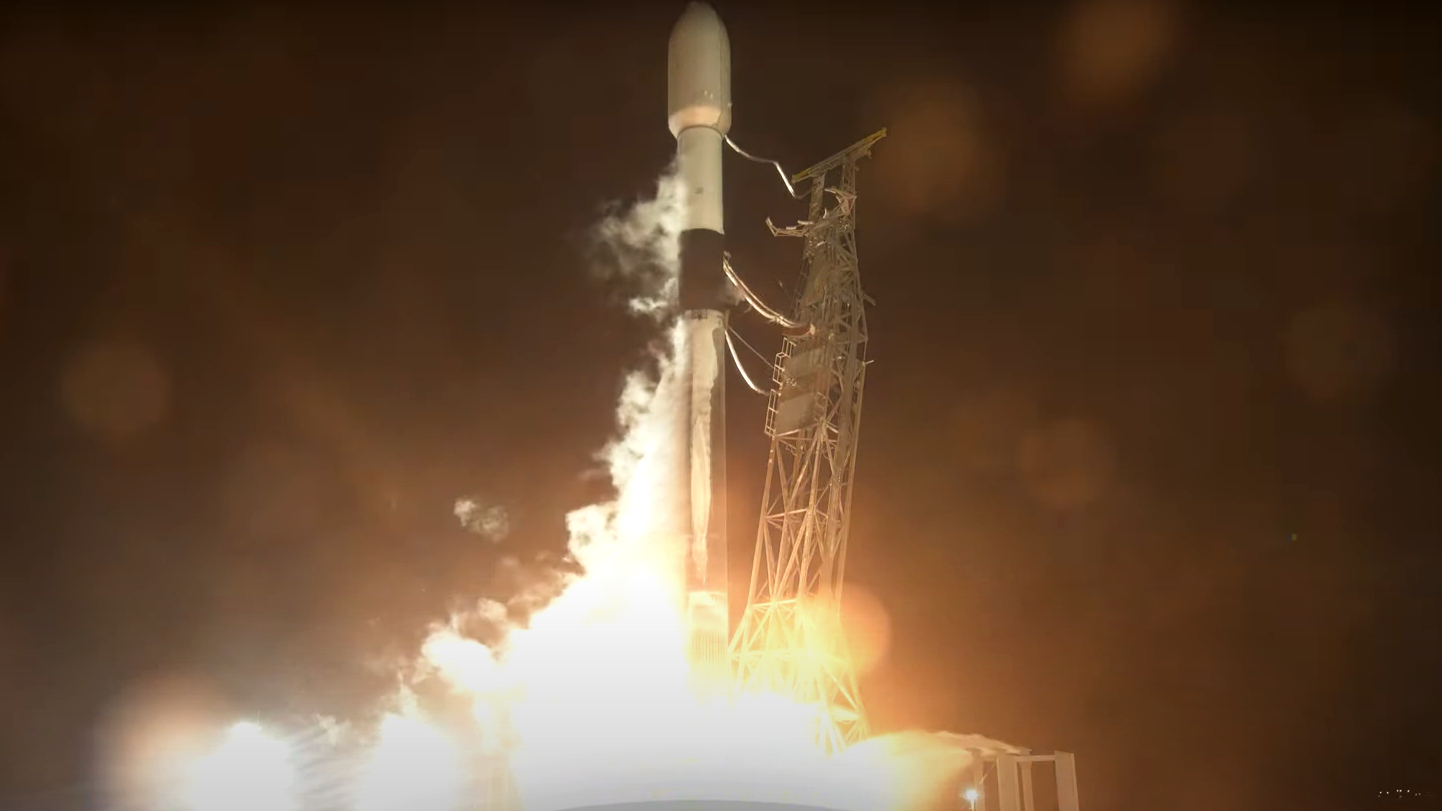SpaceX launched 21 new Starlink satellites to orbit early Tuesday (Aug. 22).
A Falcon 9 rocket carrying the Starlink spacecraft lifted off from Vandenberg Space Force Base in California on Tuesday at 5:37 a.m. EDT (0937 GMT; 2:37 a.m. local California time. The rocket was originally slated to launch early Thursday (Aug. 17) and delayed one day already. The impact of Hurricane Hilary on rocket recovery operations forced four more days of delay.
"Due to Hurricane Hilary impacting recovery operations in the Pacific, we are standing down from tonight's Falcon 9 launch of Starlink," SpaceX wrote on X (formerly known as Twitter) late Thursday. SpaceX recovers its first-stage Falcon 9 boosters by landing them on a drone ship in the ocean about 8 minutes after launch.
Related: Starlink satellite train: How to see and track it in the night sky

The Falcon 9's first stage came back to Earth on Tuesday morning and landed on the SpaceX drone ship Of Course I Still Love You about 8.5 minutes after liftoff.
It was the 15th launch and landing for this particular booster, according to a SpaceX mission description. That's just one short of the company's reuse record, which is held by two different Falcon 9 first stages.
SpaceX has launched nearly 5,000 Starlink satellites to low Earth orbit (LEO) to date — a huge number to be sure, but likely just the beginning.
Get the Space.com Newsletter
Breaking space news, the latest updates on rocket launches, skywatching events and more!
Elon Musk's company already has permission to deploy 12,000 Starlink satellites in LEO, and it has applied to an international regulator for approval to loft another 30,000 spacecraft on top of that.
Join our Space Forums to keep talking space on the latest missions, night sky and more! And if you have a news tip, correction or comment, let us know at: community@space.com.

Michael Wall is a Senior Space Writer with Space.com and joined the team in 2010. He primarily covers exoplanets, spaceflight and military space, but has been known to dabble in the space art beat. His book about the search for alien life, "Out There," was published on Nov. 13, 2018. Before becoming a science writer, Michael worked as a herpetologist and wildlife biologist. He has a Ph.D. in evolutionary biology from the University of Sydney, Australia, a bachelor's degree from the University of Arizona, and a graduate certificate in science writing from the University of California, Santa Cruz. To find out what his latest project is, you can follow Michael on Twitter.









